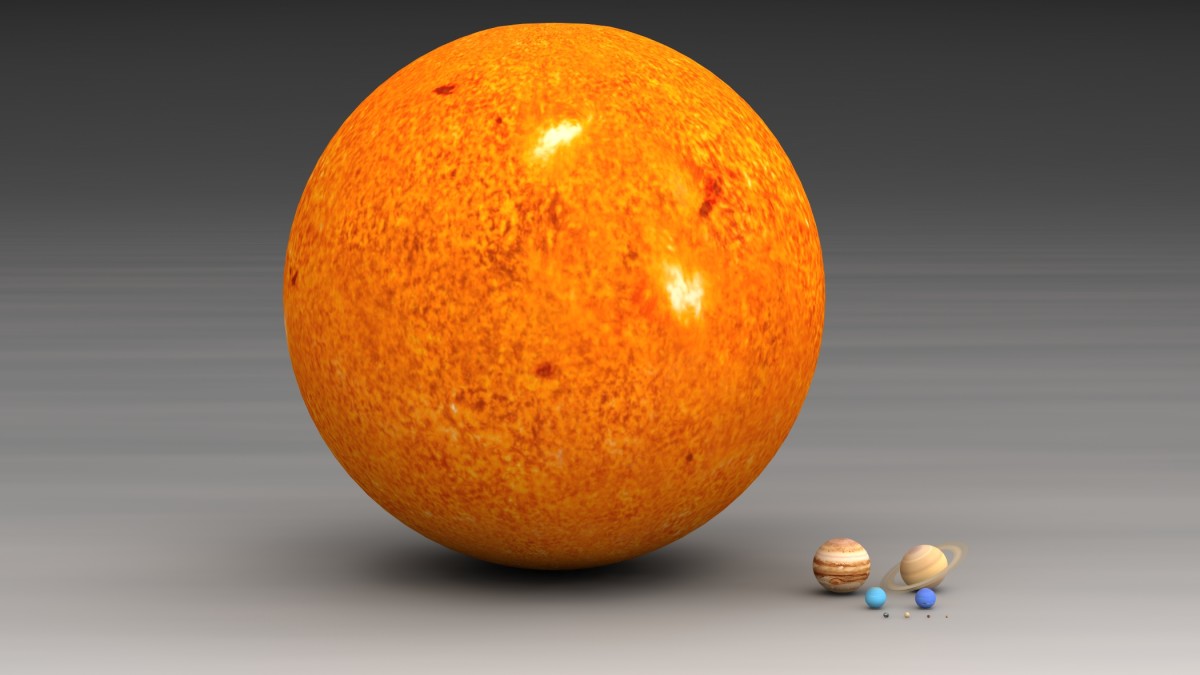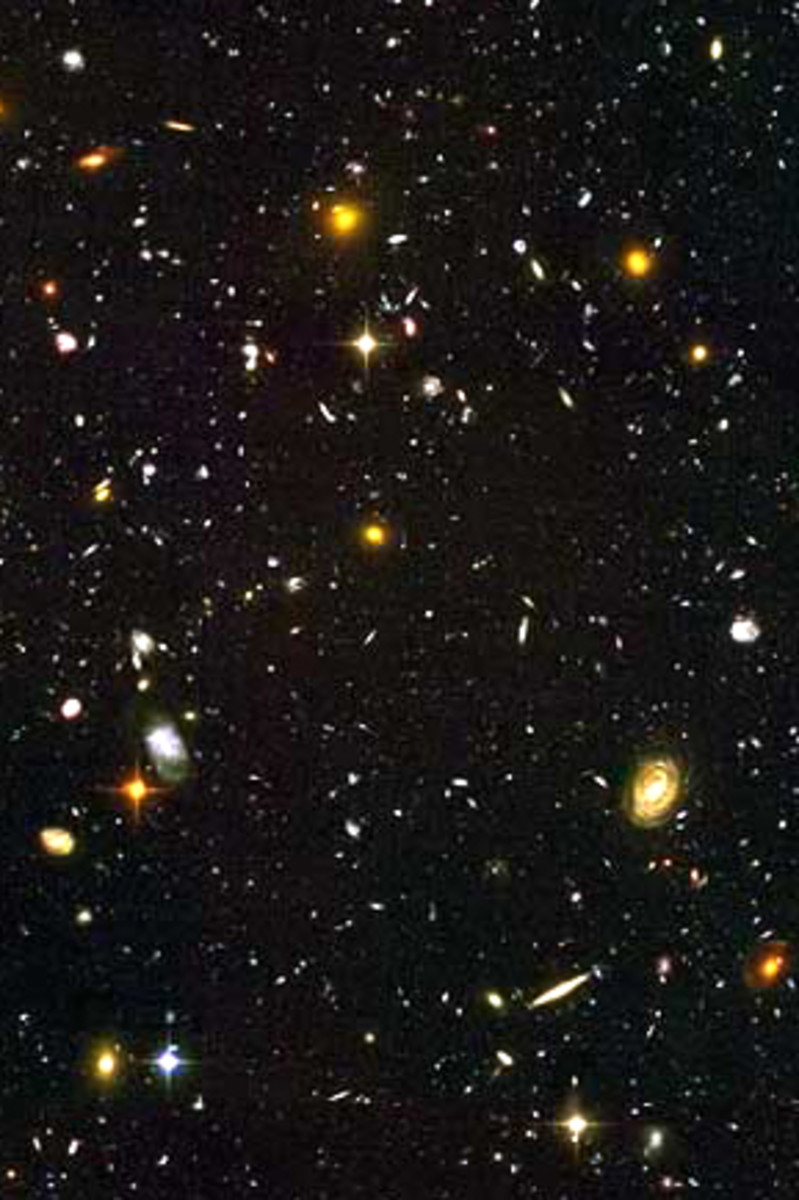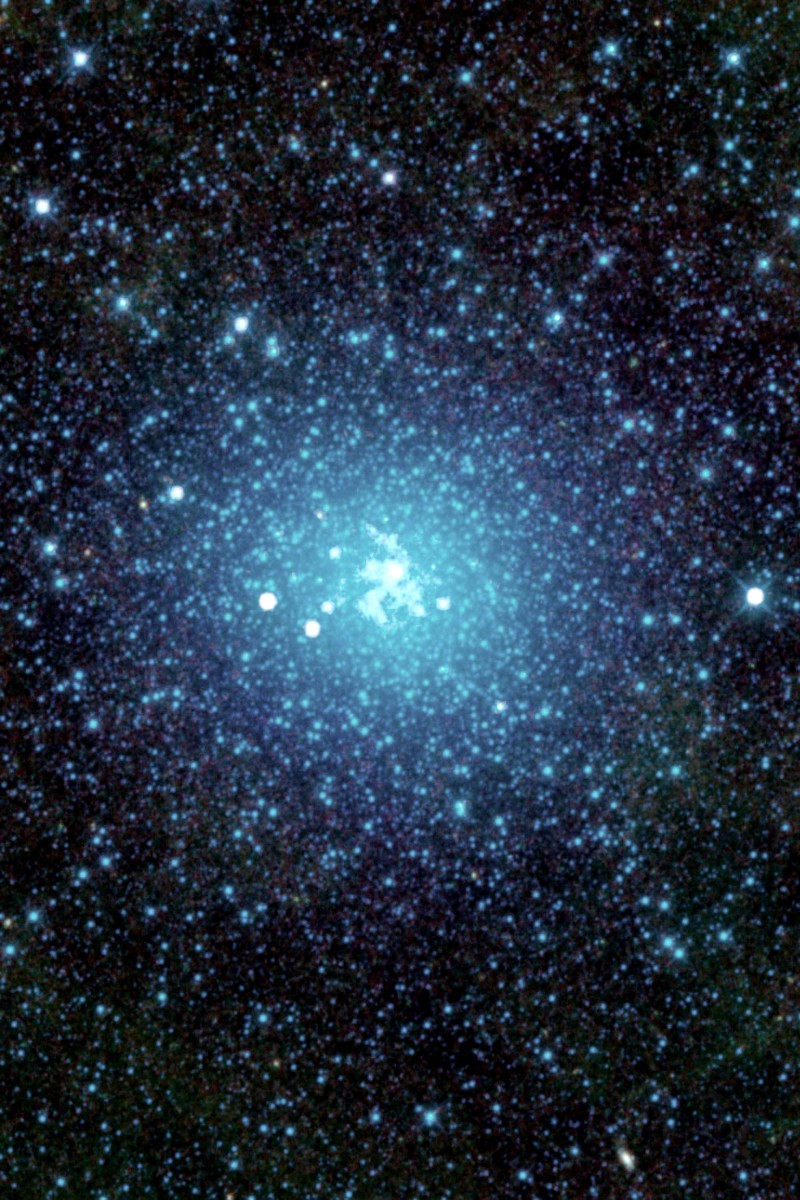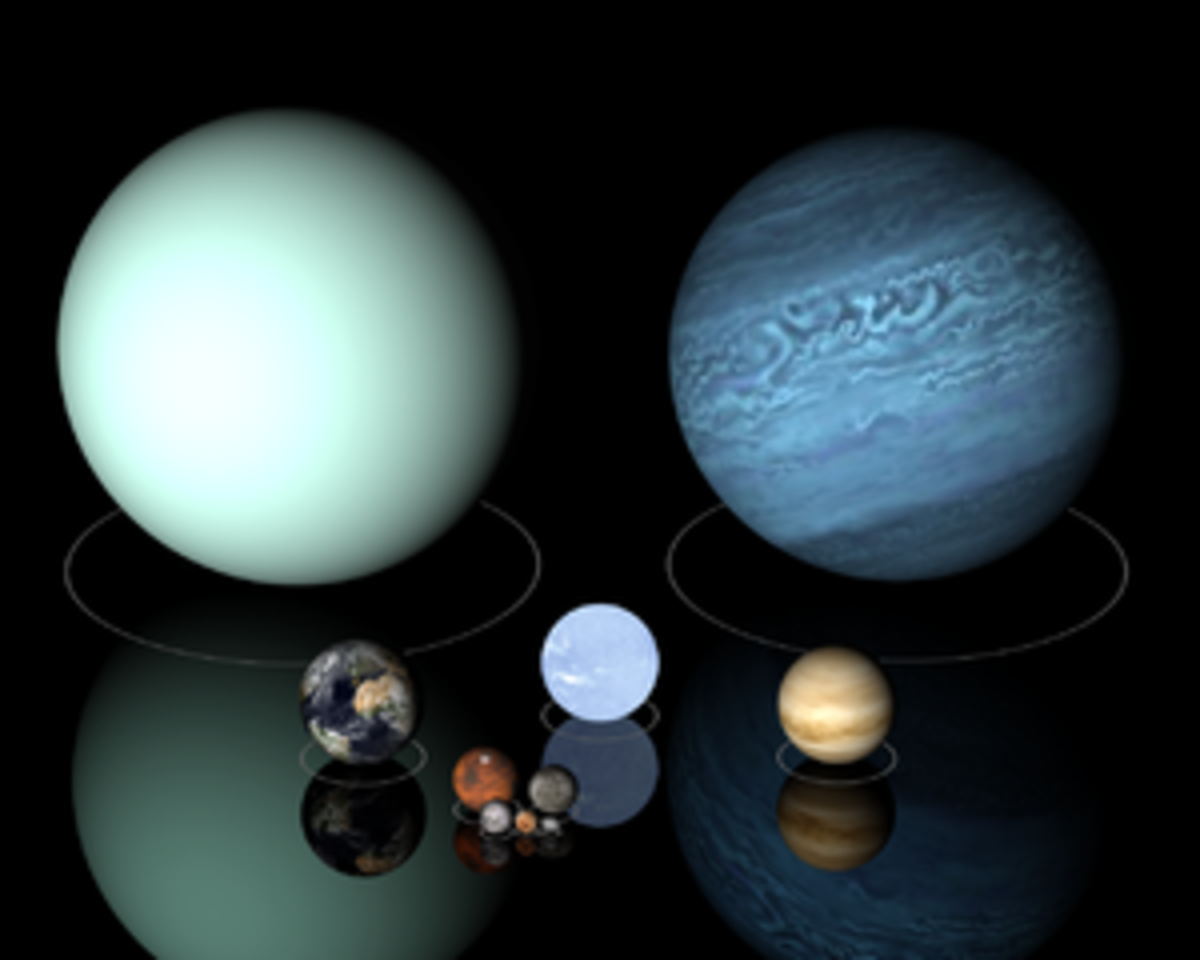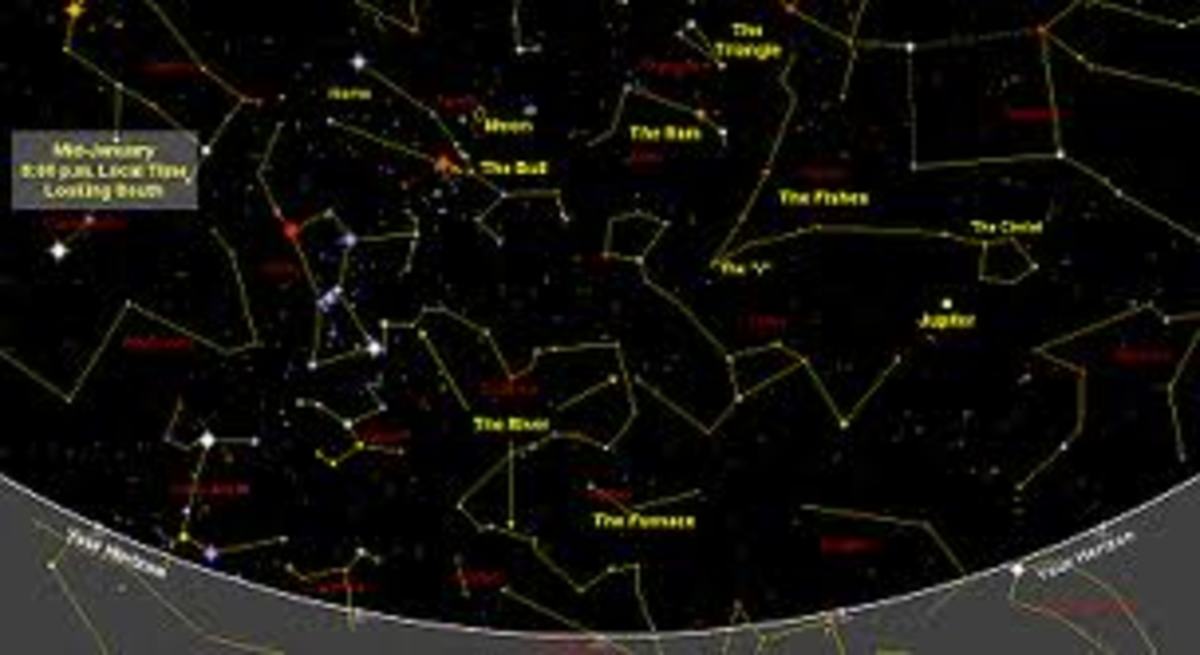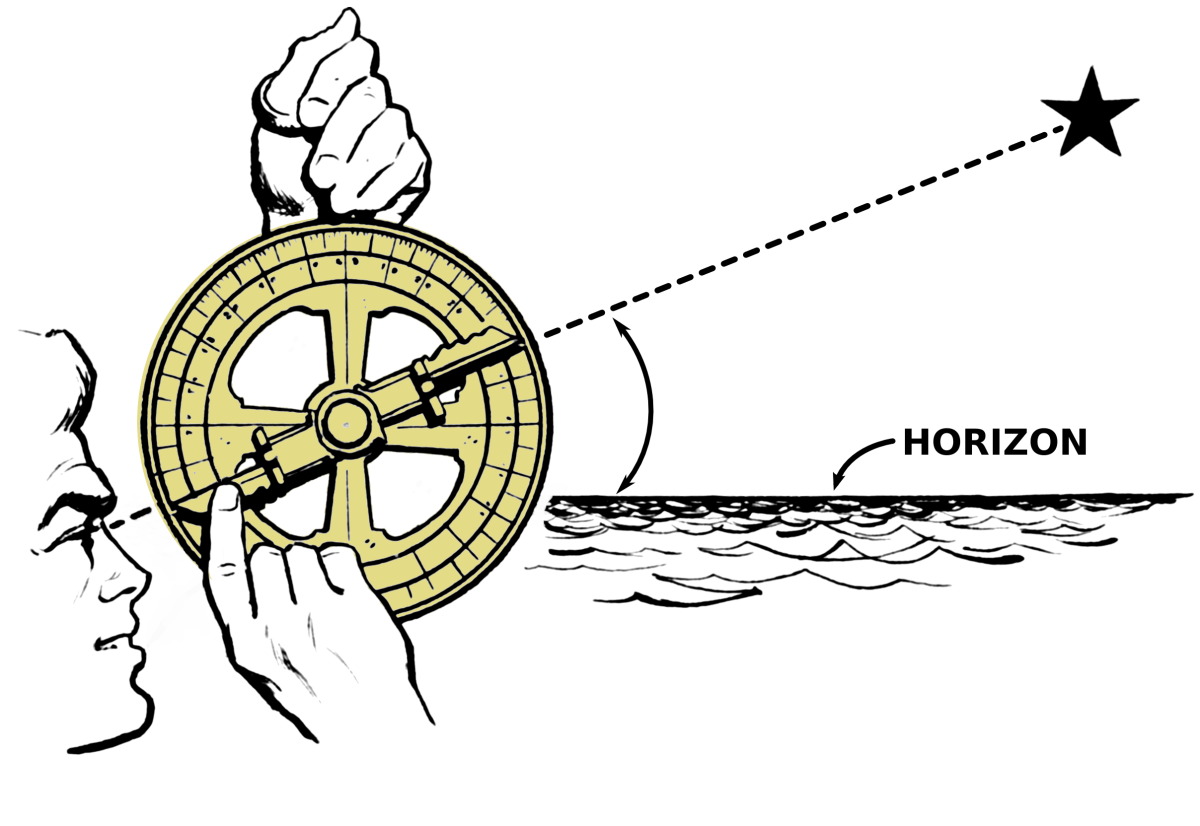The paradox of binary stars
Albireo is the one of the brightest star in the constellation Cygnus, 380 light years away from the Earth. While with the naked eye it appears as a single star, one may be surprised looking this star by an instrument.
Actually, Albireo consist from two stars, Albireo A with the apparent magnitude 3.1 and Albireo B with magnitude 5.1. It is not clear whether two stars are physically connected or they are just close each other on the sky as seen from the Earth. Moreover, scientists established that Albireo A is a binary star which means that two components interact gravitationally.
A binary star is a binary system consisting from two stars moving around their common center of mass, which is caused by the gravitation. Most of stars are not alone bat in pairs. It is not uncommon to find a pair in the community with a third body (which is the case with Albireo if main components are real binary star).
Also, there are known situations where both components are binary stars as well. In such cases we talk about multiple star system. Double star is more general term than binary star. While binary star assume gravitational connection between stars, double star may include every two stars which are seen very close on the sky (optical double star).
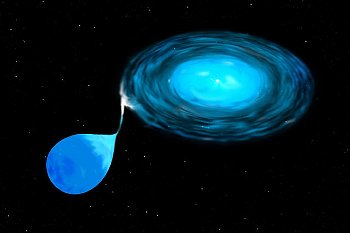
Kinematics of binary system
Two bodies moving along a closed curve we call binary system. Components of a dual system are orbiting so that the ratio of their distances from the center of mass remains unchanged. This ratio equals related mass ratio.
If the orbit is ellipse, eccentricities are equal and major semi-axises have the same direction. It holds

where M1 and M2 are masses of components, P is orbital period of a component and a is major semi-axes of a component. This equation is the generalization of the Third Kepler's Law of planetary motion. Let mention that the equation represents one possible solution of two body problem – case when eccentricity is less than 1. Then we have ellipse as an orbit (otherwise it can be parabola or hyperbola).
Even in the Sun system we have all possible types of orbits. Even the mass of the Moon is not completely negligible to the Earth, while Pluto and Charon are true binary system.
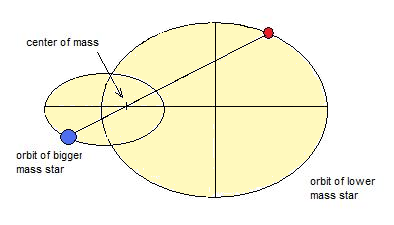
Video 1. Firstly we see simulation of Moon – Earth and then some other binary systems. It is emphasized that the velocity of the objects is highest when they are closest and it gradually decline with the distance between components.
Close binary systems
Binary stars are one of the most attractive objects. In the same time they are very useful, especially due to the fact they provide direct calculation of the mass. Close binary pairs are of special interest.
These are couples with diameter of components not much smaller of their distance. They occur in three main forms:
- detached binary,
- semidetached binary
- and contact binary
as Figure 3 illustrates. Systems differentiate by the stage to which star fills its Roche lobe. Roche lobe is the space around a star where, if one release a particle it would fall back to that star.
From the detached binary, a pair exceed to the other two, when one or both stars fulfill Roche lobe. Within semidetached case, there is mass transfer through Lagrange point from a giant or super-giant to its companion. Since that mass has angular momentum, it usually forms an accretion disc around the companion.
Such mass transfer cause an unusual phenomenon. Namely, a star can be found in such a stage of development as it is impossible for an individual star with the same initial condition. A star with lower mass can be bigger and on a higher stage of development than its companion. In stellar astronomy this paradoxical situation is known as Algol paradox. The situation can be repeated.
According to the well known theory, stellar evolution depend on the mass of the star. More massive stars consume their 'fuel' faster. The greater the mass of star, the faster evolution. This means that a star faster leaves of the main-sequence and enter a giant phase.
Algol (β Per) is a bright star in the constellation Perseus, at the distance of 93 ly. Actually, Algol is a three-star system, where binary system Algol A – Algol B forms another binary system with the component C. Orbital period of components A and B is 2.87 days, whereas the value of another period is 680 days. Interestingly, in the first system the more massive component Algol A is found on the main-sequence while its less massive companion is a sub-giant.
The explanation of the phenomenon is in gas flow between the stars. When the more massive star become a giant and fulfill its Roche lobe, it starts to transfer mass to the companion. As a result a giant star is a less massive than the main-sequence companion.
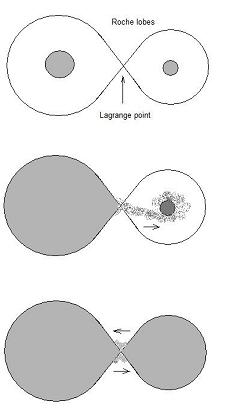
Genesis of binary stars
The question is haw come that stars are mostly in pairs, or multiple system. Might the first thought could be that the stars are randomly gathered together and then remained trapped by the gravity. Such a scenario is possible but rare. The reason lies in the simultaneous formation of the stars, from the same interstellar cloud. Rotating stellar dust of a ring shape divide into two condensed clouds. Depending on angular momentum, the process of separation can continue. In the second step, one or both components may become binary system itself. Further development leads to protostars and finally to stars.
The largest number of binary and multiple stars are formed at the origin. Nevertheless, the fact that there are systems in which the mass of companion is much smaller than of primary star, suggests that these companions are caught by the larger star. If a small star get close to a big one, in most cases it will continue its moving along a curved path. But if there is third object in the vicinity, or stars are surrounded by interstellar matter (which cause loss of kinetic energy) they could be bound in the system.
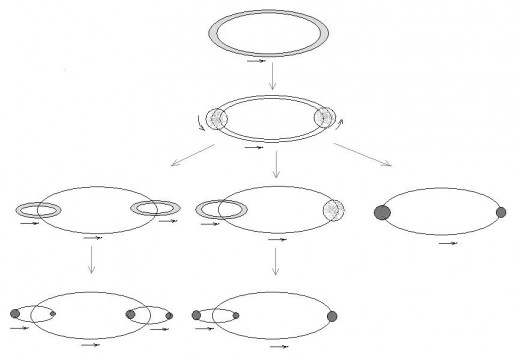
Binary star
| Period
| Type
|
|---|---|---|
61 Cygni
| 659 yr
| visual
|
Sirius
| 50.09 yr
| visual
|
Procyon
| 40.82 yr
| visual
|
V367 Cygni
| 18.59 d
| spectroscipic
|
Beta Lyrae
| 12.94d
| eclipsing
|
Table 1. Examples of binary star systems
Classification of binary stars
Usually, binary stars are classified into four groups according to the way of in which they are detected as binary. Some stars constantly change position in respect to another close star and longer observation reveals their cycle around the main components. These are visual binary star. Spectroscopic binaries shows periodic changes of wavelength in spectral lines. Eclipsing binaries are observed photometrically, by change in brightness caused by an eclipse. If orbital plane of spectroscopic binary star is in line with an observer than they are eclipsing binaries in the same time. There are also astrometric binaries. Their one component shows fluctuations in its own motion, whereas because of various reasons the second component can not be detected.
Visual binary stars
Study of binary stars began after publishing of the revolutionary I.Newton's work “Philosopihe naturalis principia mathematica”, as well as by creating even better telescopes. In the second half of the 18. century binary stars are intensively studied by F.W. Herschel (1738-1821). Herschel observed a lot more close stars that it would be expected on the basis of random distribution. Then he set theroy on circular motion due to gravity, and conform it by frequent observations of particular pairs. In the 1782. Herschel published first catalogue of binary stars with data on 269 systems.

Spectroscopic binary stars
With development of spectrum analysis it was possible to investigate binary stars which are too close to be seen separatelly by any optical instrument. Unlike visual binaries, spectroscipic systems are mostly of short period, up to 100 days. Velocity amplitudes are usually between 20 kms-1 to 100 kms-1.
Eclipsing binary stars
In general, it is easier to detect changes in brightness than in wavelength. Photometric researches reveal binary nature of many stars of very small size. By this method we can observe stars in other galaxies. Typical for type of binaries are short periods from several hours to 10 days, while periods like several years are very rare. Photometric solution of pair kinematics is easier if there are spectroscipic measurement as well. However, there is only few photometric systems wich are spectroscipic in the same time.
These stars are traditionally divided into three classes, Algol type, β Lyrae type and W Ursae Majors type.
-
Within β Lyrae type, brightness is so changeable that estimation of eclipse duration is hardly possible. Among other things, this is caused by shine difference of parts of star's surface.
-
In the case of W Ursae Majors binaries periods are very short, usually up to 1 day. The depths of primary and secondary minimum are similar.
-
Within Algol type stars brightness is constant outside of eclipse. The beginning and the end of eclipses are separated; and primary as well as secondary maximum have no equal depth. The primary minimum is extremely deep.
This classification is not exact, since there are many cases which do not fully fit into any of groups. Actually, as ti has been shown letter, Algol, β Lyrae type and W Ursae Majors are not typical representative of their group. Namely, Algol shows charachteristics of a star from β Lyrae type, while β Lyrae can not be include in this standard classification.
Video 2. An animation of eclipsing binary star. Red point between stars presents the center of mass.
Total brightness has two minimum, deeper one when the companion eclipses primary star while the opposite eclipse results with smaller minimum.
A short quiz - check your knowledge!
view quiz statisticsMass determination
It is empirically determined that the luminosity of stars on the main sequence (in Hertzsprung-Russell diagram) is a function of mass star. However, we can not interpret this relation in full generality. First of all the relation is established on a small sample of main sequence stars. Besides, related graph is not clear line. There are also some other approaches to mass approximation, while for binary stars direct calculation could be possible.
We can use equation (1) for the purpose of straightforward mass calculation; knowing period P of the system, average distance (the sum of two major semi-axis in case of ellipse) a between components and mass ratio. Mass ratio is equal to the ratio of velocity of components.
Therefore, this method is applicable to two types of objects: visual binaries with known orbital elements, mass ratio and parallax, as well as eclipsing and spectroscopic (with known velocity ratio).
Case study
In a globular cluster, there is observed a binary star system with orbital period of 11 minutes only. It is determined, due to the luminosity, that the total mass of system is 1.5 Sun masses. What is the distance between the stars? What is the velocity of the components?
Solution: Firstly, we can use the third Kepler's law (1) to calculate the distance between centers of mass. It holds
a3 / P2 = G * (M1+ M2) / 4π2,
which gives
a3 = G * (M1 + M2) * P2 / 4π2
a3 = 6.67*10-11 * 1.5 * 1.9*1030 * 6602 / 4π2 m3
a = 128050 km
Now the relative velocity v can be easily calculated. It holds v = 2*a*π / P, which gives v = 12184 km/s.


